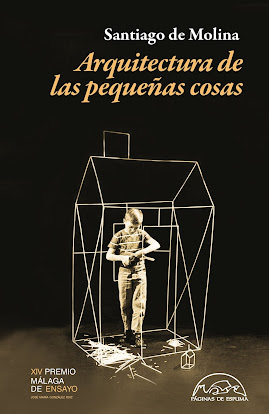El 9 de noviembre de 1977, Manuel Solá-Morales refutó de un golpe la tesis de León Krier sobre el plan de Cerdá de Barcelona y de paso la historia del urbanismo al completo. Desde ese momento se hizo palpable que el trazado de esta ciudad no estaba hecho por la mera repetición de manzanas sino por los oblicuos espacios vacíos de sus esquinas. Las manzanas, en realidad, eran circunstanciales. La verdadera unidad de la ciudad se había logrado gracias a los espacios vacíos capaces de articular cuatro cuartos edificados a su alrededor.
Prestar atención a las calles y a esas pequeñas plazas sesgadas significaba que los espacios libres eran más importantes que los edificios. Y, por supuesto, si esta teoría adquirió visos de realidad también era gracias a la inquietante dimensión política que acarreaba. Porque mientras la arquitectura edificada pertenecía a unos propietarios, ¿de quién era la calle? ¿De quién era aquella otra ciudad descubierta por Solá-Morales?
Ese punto de vista comportaba un concepto optimista y humano de la ciudad, donde la gente y sus relaciones se convertían en el argumento central de Barcelona. A partir de ahí, las calles se convirtieron en el eje y la imagen de todas sus oportunidades latentes. Lo cual es otra manera de entender el floreciente espíritu barcelonés de ese momento.
Pasado el tiempo y cuando todo en Barcelona ha cambiado, no lo han hecho los límites que preservan ese espacio público. Sorprendentemente, el borde entre las manzanas y los huecos se ha mantenido a lo largo del tiempo, mientras que los patios interiores han sido ocupados y el desorden de las cubiertas se ha convertido en una maravillosa metáfora de la variedad vital de los habitantes que viven bajo ellas. Baldosas de arcilla cocida y máquinas de aire acondicionado ocupan las cubiertas formando un fabuloso collage y ofreciendo una vista que hubiese hecho las delicias del mismo Gaudí.
Pero hoy sobrevuela un interrogante sobre Barcelona, ¿se trata de una visión reversible? ¿Debería olvidarse el descubrimiento de Solá-Morales y pensar de nuevo esa ciudad como algo impresionante pero sólo lograda gracias a un módulo de ciento trece por ciento trece metros? En realidad la imagen de esta ciudad oscila pendularmente, como sucede con esos juegos de figura y fondo, donde a veces se ven dos amantes a punto de besarse y a veces un florero a punto de caer.
Tal vez porque cada ciudad tiene siempre algo de ciudad-gato de Schrödinger, donde todo sucede, al mismo tiempo y en el mismo lugar, como esas otras ciudades de Olinda, Raissa, Pentesilea, Marozia o Argia… Benditas ciudades imposibles.
On 9th of November of 1977, Manuel Solá-Morales refuted, once and for all, Leon Krier´s thesis about Cerdá´s plan for Barcelona and the whole history of urbanism. At that moment we all learned that the Barcelona urban grid was not traced by the mere repetition of city blocks but by the empty oblique spaces of their chamfered corners. Blocks, actually, were merely circumstantial. The true unity of the city was achieved thanks to those voids that were able to articulate four quarters of a whole around the edges of each block.
To take notice of the streets and those tiny skewed squares meant that the empty spaces were more important than the buildings. And of course, if that theory were correct than it was proof of unsettling political implications. Because, while buildings belong to their owners or their tenants, to whom does the street belong? To whom did that other city discovered by Solá-Morales belong?
This point of view introduced an optimistic and humanized concept of the city where people and their relationships became the essence of Barcelona's urban life. Accordingly, the streets became the major axes of all the city's hidden potential. And that became another way to understand the flourishing spirit typical of Barcelona at that time.
Today, in those blocks almost everything has changed from Cerdá´s original plan except the perimeters which define and preserve the public space. Surprisingly, the edge between the massive block and those voids has maintained itself, while the inner courtyards have been occupied and the messy roofs have become poetic metaphors of the variety of life within. Red clay tiles and air conditioners occupy the top floors like a fabulous collage and offer a view that would have enchanted Gaudí himself.
But today there is a question hanging over Barcelona, is this Solá-Morales´s perspective reversible? Should we forget his discovery, and believe again that the city is composed of just a one hundred and thirteen by one hundred and thirteen meter block module?
If so, the entire image of the city could swing like a pendulum, like those confounding images of figure/ground, where sometimes it looks like two lovers kissing and others like a vase about to fall. So I wonder if perhaps every city is like Schrödinger´s cat, where everything happens, at the same time and in the same place, like those other cities of Olinda, Raissa, Penthesilea, Marozia or Argia... Blessed impossible cities.

































































































































